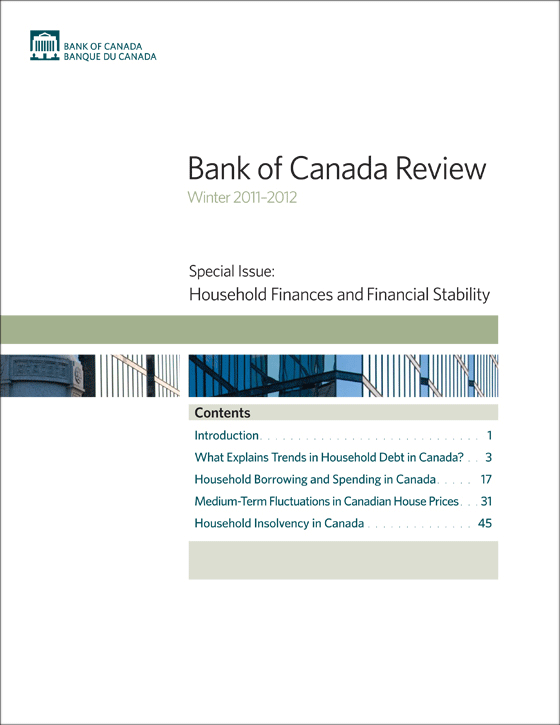Bank of Canada Review - Winter 2011-2012
Available as:
PDF
This special issue, “Household Finances and Financial Stability,” examines recent Bank of Canada research into two interrelated facts: the steady increase in Canadian household indebtedness in recent decades, and the upward trend in real house prices in Canada since 2000. Rising house prices could lead to the accumulation of debt, and abrupt movements in either factor can influence the financial health of households, which are a central part of Canada’s economy.
